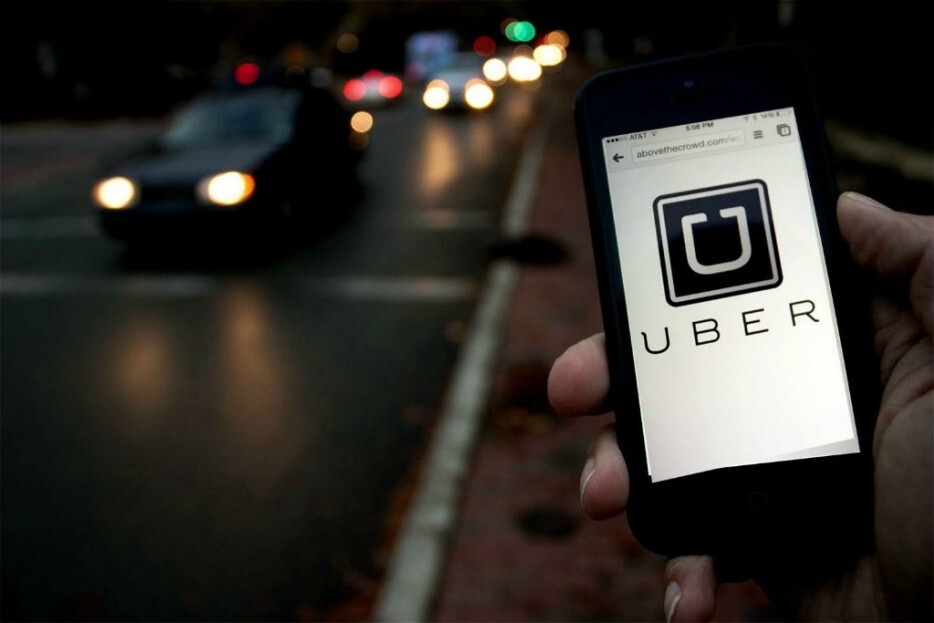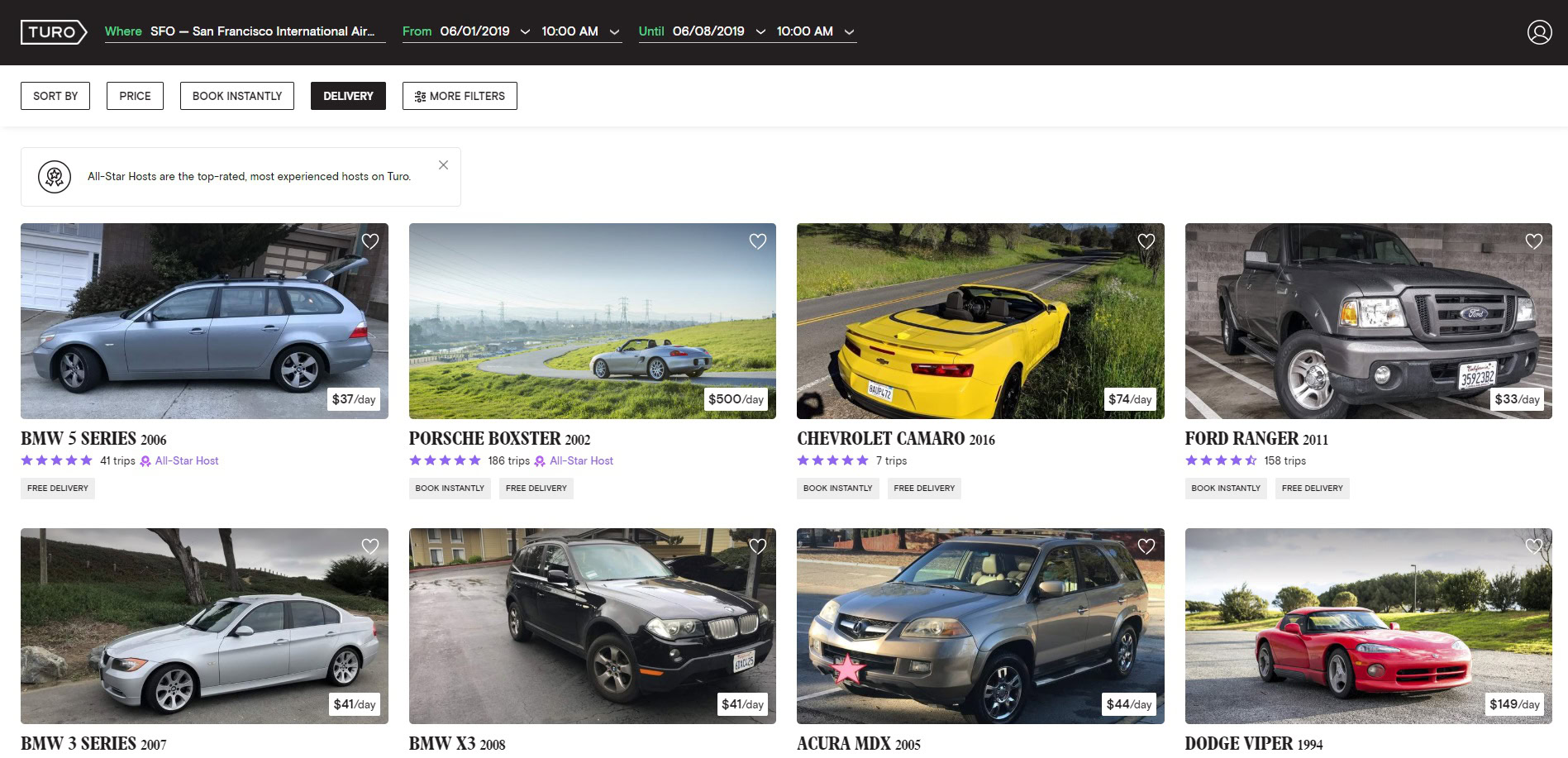List
Story > NEWS > Detail
[News] Vehicle Sharing in U.S.
The U.S. is one of the most actively emerging shared economy business models in the world, with companies adopting a shared economy system emerging from the early 2000s, now expanding into various areas, including transportation, finance, space and talent, and converging various ideas and technologies around Silicon Valley, where venture companies and global companies are concentrated. Currently, U.S. shared platform companies are leading the global shared economic market, and one of the representative areas of the sector is vehicle and passenger sharing services in the transportation sector. In fact, this service has resulted in significant cost savings, including a 20% reduction in the number of vehicles involved in routine tasks in U.S. cities. The expansion of the flat form, which shares vehicles and vehicles, has brought about a shift in the thinking that people don't have to own a car because they can ride it anytime with a smartphone, changing even the traditional culture of car ownership.

One of the reasons that Uber, the flagship company of the ride-sharing service platform, was able to expand as an alternative to conventional taxis is that it has eased some of the inconvenience and complaints about the existing taxi service. The U.S. has been enforcing regulations restricting taxi transport licenses for the past few decades, allowing taxi license holders to keep their licenses unlimited as long as they want, and requiring considerable time to acquire new ones. As a result, the quality of taxi service such as Yellow Cap, a leading U.S. taxi carrier, has been notorious for its poor quality, and various problems, unfriendliness, excessive tip demands, and the risk of crime have been neglected for decades.
For this reason, there have been several attempts by the government to issue new taxi licenses, but they have been thwarted every time due to opposition from the existing taxi industry. Uber provides real-time connection between passengers and vehicles who want to get on and off with an app for convenient and affordable use. Moreover, Nirah continues to expand the service sector while addressing mobile convenience, urban transport, and travel time savings through data analysis of these services. The transition from the B2C-type call taxi business that connects call-oriented businesses and individuals to P2P-type business that connects individuals (demands) and individuals (providers) through mobile apps has become a successful business model. Besides Uber, LIFT, a P2P ride-sharing platform, Zipcar, a B2C-type vehicle-sharing platform, and TURO, a P2P-type vehicle-sharing platform, are also actively operating in the U.S.

Although some see Uber-like ride-sharing platform services as part of the shared economy, which implements new value-generating economic models by utilizing idle resources such as idle vehicles or extra seats (consumption of consumers' producers, economies of new sizes, and commercialization of non-professional services) as part of existing regulations, Uber's form of service is not seen as a target for the existing taxi industry in the U.S Although legislation passed in Congress in 2014 to recognize Uber as a legitimate service by classifying it as a new field of business in Washington, D.C., legislation is still in place to allow a service model using a ride-sharing platform to coexist with existing stakeholders, there is still a worldwide debate over whether such ride-sharing platform services are still legal.

LIFT, which is also mentioned with Uber, began providing P2P ride-sharing services that connect passengers and drivers through smartphone apps in earnest in 2012 by establishing a Facebook-like app structure and service. In 2014, the company began serving women and young consumers in seven regions including San Francisco, Los Angeles, Boston, Washington D.C., and has been providing services in 250 cities as of 2016. Besides the U.S., it is also available in nine cities in Asian countries, including Singapore and the Philippines. Lee Pts is currently operating through partnerships with General Motors of the U.S., OLA of India, Grab, which operates in Southeast Asian countries such as the Philippines, Thailand and Vietnam, and has recently expanded its service market centering on Toronto, Canada, Britain and London. Meanwhile, the lift has rapidly emerged as Uber's competitor, rising sharply from its 17 percent share of the U.S. ride-sharing market in January 2016 to 35 percent as of 2018 as Uber's driver sexually assaulted passengers and Uber's autonomous driving car caused pedestrian deaths.
The lift includes the most basic services available: Lyft (4-seater general vehicle), Plus (6-seat SUV) service, premium LUX (4-seater luxury vehicle), Lux SUV (6-seater luxury SUV), Car seat (car seat) and Line, a joint-passenger service with drivers moving in the same direction. Recently, it acquired a bike-sharing service company called 'Motivate' to promote bike-sharing services and continues to expand into various transportation services such as electric scooters and electric bicycles, including the development of self-driving cars. In particular, the lift introduces a thorough verification system to relieve the anxiety of the users of the service. From the registration process to become a lift driver, the service is provided based on safety and trust by disclosing all information such as driving experience, criminal verification, status of accident compensation insurance, driver and vehicle photos, and previous user evaluation scores.
The U.S. is one of the most actively emerging shared economy business models in the world, with companies adopting a shared economy system emerging from the early 2000s, now expanding into various areas, including transportation, finance, space and talent, and converging various ideas and technologies around Silicon Valley, where venture companies and global companies are concentrated. Currently, U.S. shared platform companies are leading the global shared economic market, and one of the representative areas of the sector is vehicle and passenger sharing services in the transportation sector. In fact, this service has resulted in significant cost savings, including a 20% reduction in the number of vehicles involved in routine tasks in U.S. cities. The expansion of the flat form, which shares vehicles and vehicles, has brought about a shift in the thinking that people don't have to own a car because they can ride it anytime with a smartphone, changing even the traditional culture of car ownership.

One of the reasons that Uber, the flagship company of the ride-sharing service platform, was able to expand as an alternative to conventional taxis is that it has eased some of the inconvenience and complaints about the existing taxi service. The U.S. has been enforcing regulations restricting taxi transport licenses for the past few decades, allowing taxi license holders to keep their licenses unlimited as long as they want, and requiring considerable time to acquire new ones. As a result, the quality of taxi service such as Yellow Cap, a leading U.S. taxi carrier, has been notorious for its poor quality, and various problems, unfriendliness, excessive tip demands, and the risk of crime have been neglected for decades.
For this reason, there have been several attempts by the government to issue new taxi licenses, but they have been thwarted every time due to opposition from the existing taxi industry. Uber provides real-time connection between passengers and vehicles who want to get on and off with an app for convenient and affordable use. Moreover, Nirah continues to expand the service sector while addressing mobile convenience, urban transport, and travel time savings through data analysis of these services. The transition from the B2C-type call taxi business that connects call-oriented businesses and individuals to P2P-type business that connects individuals (demands) and individuals (providers) through mobile apps has become a successful business model. Besides Uber, LIFT, a P2P ride-sharing platform, Zipcar, a B2C-type vehicle-sharing platform, and TURO, a P2P-type vehicle-sharing platform, are also actively operating in the U.S.

Although some see Uber-like ride-sharing platform services as part of the shared economy, which implements new value-generating economic models by utilizing idle resources such as idle vehicles or extra seats (consumption of consumers' producers, economies of new sizes, and commercialization of non-professional services) as part of existing regulations, Uber's form of service is not seen as a target for the existing taxi industry in the U.S Although legislation passed in Congress in 2014 to recognize Uber as a legitimate service by classifying it as a new field of business in Washington, D.C., legislation is still in place to allow a service model using a ride-sharing platform to coexist with existing stakeholders, there is still a worldwide debate over whether such ride-sharing platform services are still legal.

LIFT, which is also mentioned with Uber, began providing P2P ride-sharing services that connect passengers and drivers through smartphone apps in earnest in 2012 by establishing a Facebook-like app structure and service. In 2014, the company began serving women and young consumers in seven regions including San Francisco, Los Angeles, Boston, Washington D.C., and has been providing services in 250 cities as of 2016. Besides the U.S., it is also available in nine cities in Asian countries, including Singapore and the Philippines. Lee Pts is currently operating through partnerships with General Motors of the U.S., OLA of India, Grab, which operates in Southeast Asian countries such as the Philippines, Thailand and Vietnam, and has recently expanded its service market centering on Toronto, Canada, Britain and London. Meanwhile, the lift has rapidly emerged as Uber's competitor, rising sharply from its 17 percent share of the U.S. ride-sharing market in January 2016 to 35 percent as of 2018 as Uber's driver sexually assaulted passengers and Uber's autonomous driving car caused pedestrian deaths.
The lift includes the most basic services available: Lyft (4-seater general vehicle), Plus (6-seat SUV) service, premium LUX (4-seater luxury vehicle), Lux SUV (6-seater luxury SUV), Car seat (car seat) and Line, a joint-passenger service with drivers moving in the same direction. Recently, it acquired a bike-sharing service company called 'Motivate' to promote bike-sharing services and continues to expand into various transportation services such as electric scooters and electric bicycles, including the development of self-driving cars. In particular, the lift introduces a thorough verification system to relieve the anxiety of the users of the service. From the registration process to become a lift driver, the service is provided based on safety and trust by disclosing all information such as driving experience, criminal verification, status of accident compensation insurance, driver and vehicle photos, and previous user evaluation scores.



